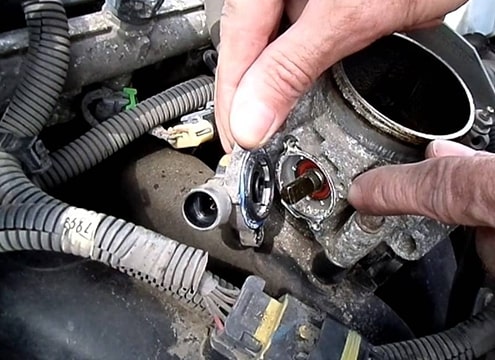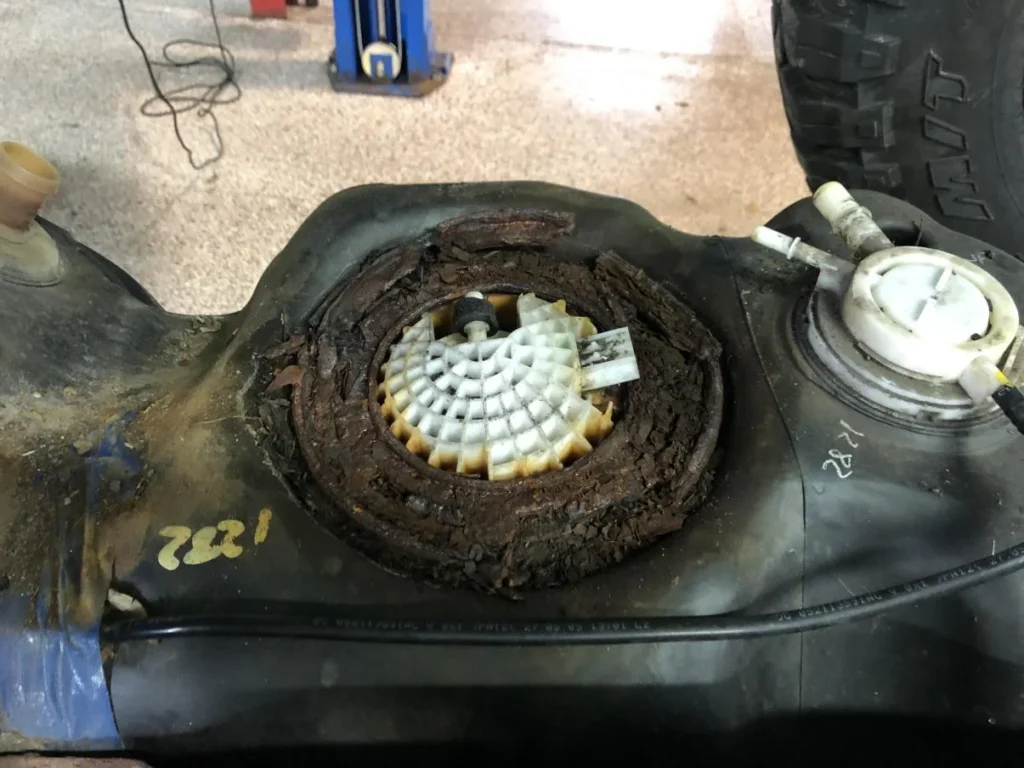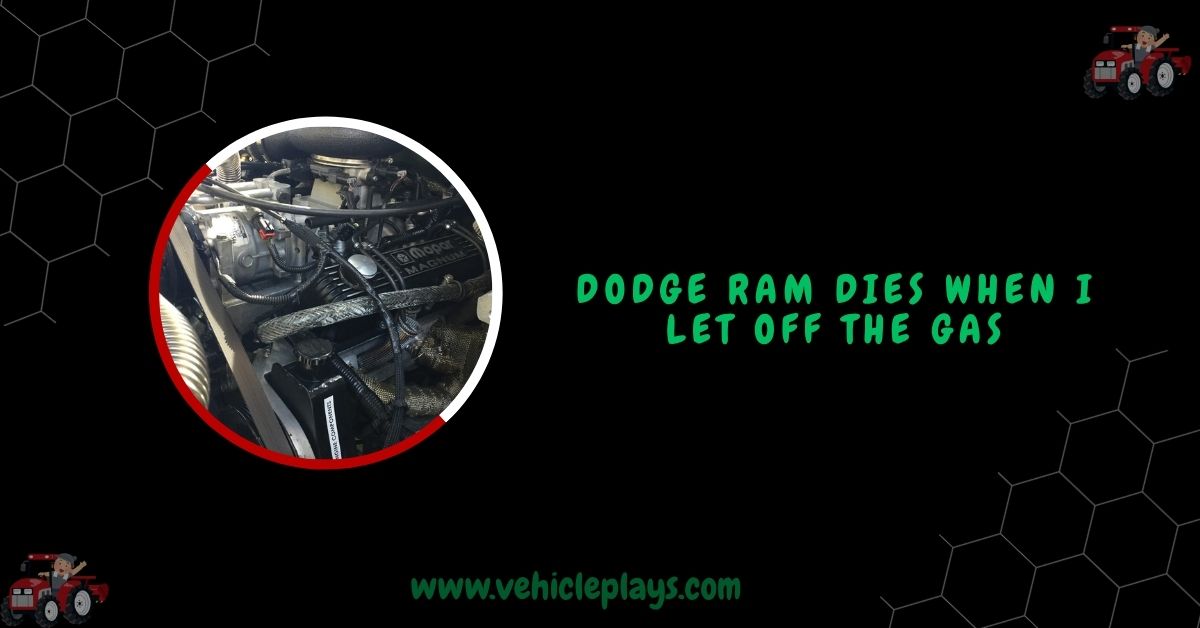Experiencing a Dodge Ram that dies when you let off the gas can be frustrating and potentially dangerous, especially in traffic.
My Dodge Ram dies when I let off the gas. A dirty idle air control (IAC) valve or fuel supply issues might be the cause. Clean the IAC or check the fuel pump.
Based on insights gathered from automotive forums, expert troubleshooting guides, and owner experiences, this article explores the common reasons behind this problem, diagnostic steps, and potential fixes to get your truck running smoothly again.
Common Causes of Stalling When Releasing the Gas Pedal
1. Idle Air Control (IAC) Valve Issues
One of the most frequently cited culprits for a Dodge Ram stalling when the gas pedal is released is a malfunctioning or dirty Idle Air Control (IAC) valve.
The IAC valve regulates the engine’s idle speed by controlling the amount of air entering the engine when the throttle is closed.
Over time, carbon buildup or debris can clog the valve or its passages, resulting in insufficient airflow and potentially causing the engine to stall.
Owners of 1997-2008 Dodge Ram 1500 models, particularly those with 5.2L, 5.9L, or 5.7L Hemi engines, have reported success after cleaning or replacing the IAC valve.
2. Throttle Position Sensor (TPS) Malfunction
The Throttle Position Sensor (TPS) monitors the throttle valve’s position and sends this information to the engine control module (ECM).

A faulty TPS can send incorrect signals, disrupting the air-fuel mixture and causing the engine to stall at idle or low speeds.
This issue is common in second-generation Rams (1994-2001) and can often be diagnosed by checking for erratic idle behavior or testing the TPS with a multimeter. Replacing the TPS is a relatively inexpensive fix, costing between $30 and $60.
3. Throttle Body Contamination
A dirty throttle body can restrict airflow, leading to stalling when the gas pedal is released. Carbon deposits or oil from aftermarket air filters (like K&N) can accumulate on the throttle plate, preventing proper idle air regulation.
Cleaning the throttle body with a specialized cleaner is a cost-effective solution that often resolves the issue without requiring part replacement. Owners have reported immediate improvements after thorough cleaning.
4. Fuel System Problems
Issues in the fuel delivery system, such as a weak fuel pump, a clogged fuel filter, or malfunctioning fuel injectors, can cause low fuel pressure, which in turn leads to stalling at idle.
For instance, a failing fuel pump may not supply enough fuel when the engine demand decreases, causing the truck to shut off.
Owners of 2004-2012 Dodge Rams have reported that replacing the fuel pump or checking for vacuum leaks in the EVAP system can resolve stalling issues, particularly after refueling.
5. Electrical and Sensor Issues
Electrical problems, such as loose or corroded battery terminals, a failing alternator, or a faulty crankshaft/camshaft position sensor, can disrupt the engine’s operation.
For example, a bad crankshaft sensor may cause the engine to misfire or shut off at low speeds.
Additionally, a failing Powertrain Control Module (PCM) or loose wiring harness connections can lead to intermittent stalling without triggering error codes, making diagnosis challenging.
6. Vacuum Leaks
Vacuum leaks in the intake manifold or associated hoses can cause an improper air-fuel ratio, leading to stalling when the throttle is closed.
Owners have reported issues like loud suction noises from the throttle body, indicating a potential vacuum leak. Checking and sealing these leaks, such as around the MAP sensor, has resolved stalling for some.
7. Battery and Charging System
A weak battery or a failing alternator can cause voltage drops, which in turn affect the ECM’s ability to maintain idle.
Dodge Rams, especially older models, may stall if the battery cannot hold a charge or if the alternator isn’t supplying consistent power. Cleaning battery terminals or replacing a dead battery has fixed stalling for some owners.
Diagnostic Steps to Identify the Issue

- Check for Diagnostic Trouble Codes (DTCs): Use an OBD-II scanner to retrieve error codes. While some stalling issues don’t trigger a check engine light, codes like P1391 (intermittent loss of CMP or CKP signal) or misfire codes can point to sensor issues.
- Inspect the IAC Valve and Throttle Body: Remove and clean the IAC valve and throttle body using throttle body cleaner. Look for carbon buildup or oil residue. If cleaning doesn’t help, consider replacing the IAC valve (cost: ~$30-$50).
- Test the TPS: Use a multimeter to verify that the TPS is producing a consistent voltage output. A faulty TPS may show erratic readings. Replacement is straightforward and affordable.
- Examine the Fuel System: Verify fuel pressure using a gauge (should be 40-50 psi for most Rams). Inspect the fuel pump, filter, and injectors for clogs or failures.
- Check Electrical Connections: Ensure battery terminals are clean and tight. Test the alternator output (it should be ~13.5-14.5V) and inspect the wiring harnesses for loose or corroded connections.
- Look for Vacuum Leaks: Spray carb cleaner around intake manifold gaskets and vacuum lines to detect leaks (engine RPM will change if a leak is present).
Fixing the Problem
- Cleaning vs. Replacing: Begin by cleaning the IAC valve and throttle body, as this is an inexpensive and often effective solution. If symptoms persist, replace the IAC or TPS.
- Fuel System Maintenance: Replace the fuel filter if it hasn’t been changed recently. If the fuel pump is suspected, professional testing is recommended due to the cost of replacement (~$200-$400).
- Electrical Repairs: Replace a weak battery or alternator if voltage tests fail. For PCM issues, consult a professional, as reprogramming or replacement can be costly.
- Professional Diagnosis: If DIY efforts don’t resolve the issue, a mechanic with a lab scope can test sensor inputs/outputs to pinpoint failures. Expect diagnostic fees of ~$100.
Preventive Measures
To avoid future stalling issues:
- Regularly clean the throttle body and IAC valve every 30,000 miles.
- Use high-quality fuel and avoid consistently running the tank below a quarter, as this can strain the fuel pump.
- Check and maintain battery connections to prevent voltage issues.
- Replace sensors like the TPS or crankshaft sensor as part of routine maintenance if your truck has high mileage (>150,000 miles).
2007 Dodge Ram Dies When I Let Off The Gas
My 2007 Dodge Ram stalls when I ease off the gas. It’s likely a dirty idle air control valve or a bad throttle position sensor. Clean them first; replace if needed. Check the fuel pump too.
2013 Dodge Ram Dies When I Let Off The Gas
When my 2013 Dodge Ram dies at idle, it’s often the throttle body clogged with dirt. Clean it with spray cleaner. A bad fuel pump or sensor issues could also cause this. Get it checked.
2012 Dodge Ram Dies When I Let Off The Gas
My 2012 Dodge Ram shuts off when I release the gas. A faulty idle air valve or a dirty throttle body are common issues. Try cleaning them. If it persists, test the fuel system or sensors.
2001 Dodge Ram 1500 Starts Then Dies
My 2001 Dodge Ram 1500 starts but stalls right away. Check the idle air control valve for dirt or a bad throttle sensor. Cleaning parts or replacing the valve usually fixes this issue.
2001 Dodge Ram 1500 Idle Air Control Valve Location
The idle air control valve on my 2001 Dodge Ram 1500 is on the throttle body, near the air intake. Look for a small part with two bolts and an electrical connector. Easy to spot.
2001 Dodge Ram Idle Air Control Valve
The idle air control valve in my 2001 Dodge Ram keeps the engine idling smoothly. If it’s dirty or broken, the truck may stall. Clean it with a spray or replace it to resolve the stalling issue.
98 Dodge Ram 1500 Won’t Idle
My ’98 Dodge Ram 1500 won’t stay running at idle. A bad idle air valve or throttle position sensor is likely. Clean the throttle body first. If it doesn’t help, check sensors or fuel pressure.
FAQs
1. Why Does My Truck Shut Off When I Give It Gas?
My truck stalls when I press the gas. A faulty throttle sensor or a clogged fuel filter might be the cause. Check them.
2. Why Does My Dodge Ram Shut Off When I Stop?
My Dodge Ram dies at stops. A dirty idle air valve or a bad fuel pump could cause it. Clean or replace parts.
3. Why Won’t My Truck Stay Running Unless I Give It Gas?
My truck only runs when the gas pedal is pressed. Check the idle valve or throttle body for dirt. Sensors might need replacing, too.
4. How to Turn Off Auto Shut Off on Dodge Ram?
To disable auto shut-off on my Dodge Ram, go to settings on the dash, find “auto stop/start,” and turn it off.
5. Why Does My Truck Lose Power When I Give It Gas?
My truck loses power when I press the gas pedal. A clogged fuel line or a bad sensor might be the issue. Get it checked.
6. Why does my 1999 Dodge Ram Sport 1500 stall when I take my foot off the gas pedal?
My 1999 Dodge Ram Sport 1500 stalls when I release the gas. A dirty idle air control valve or bad throttle sensor is likely. Clean them or check the fuel system.
Conclusion
My Dodge Ram stalls when I let off the gas, which is frustrating but fixable. Cleaning the idle air control valve or throttle body often resolves the issue. If not, check sensors or the fuel system. Regular maintenance keeps my truck running strong.

